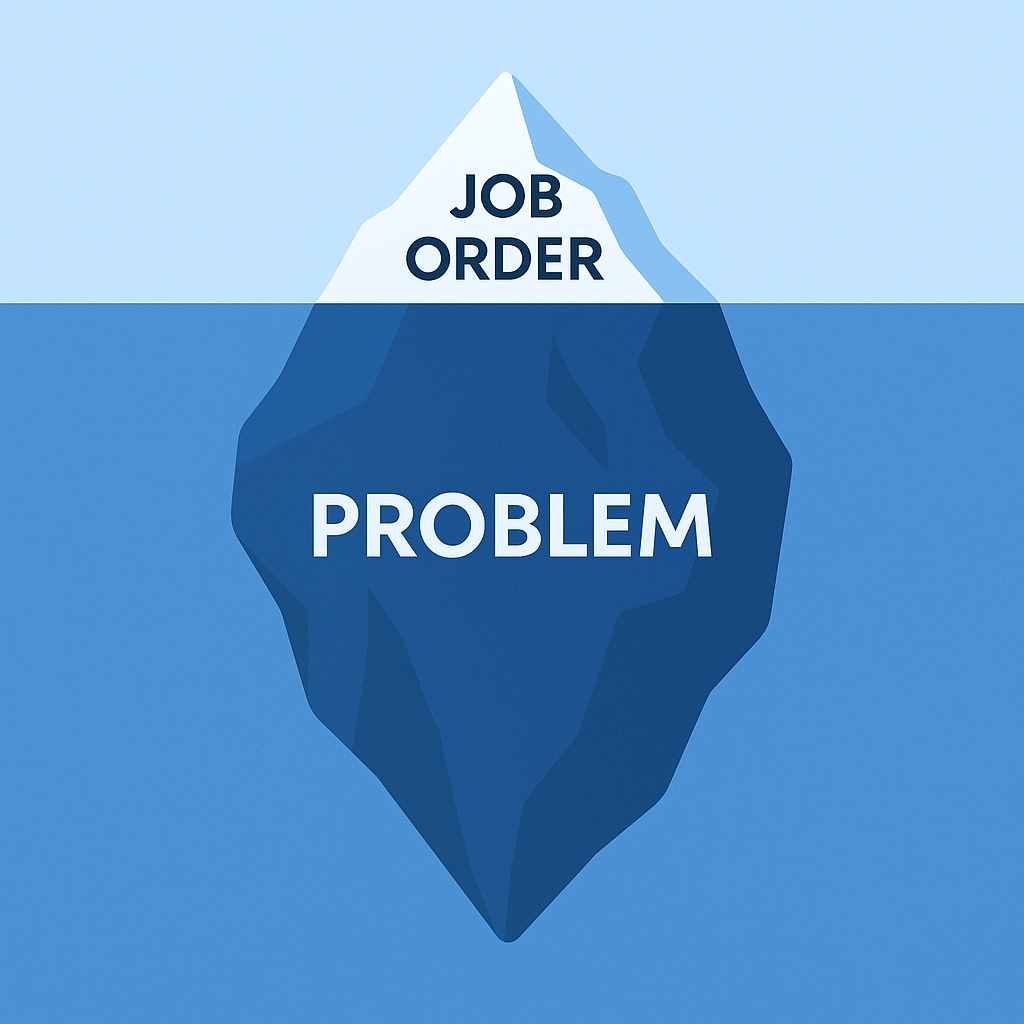Selling With Your Consultant
In my previous post, How to Prevent Unexpected Contract Terminations, I shared how systemizing consultant and client check-ins at key milestones...
8 min read
![]() Dan Fisher
:
May 16, 2023 7:19:53 AM
Dan Fisher
:
May 16, 2023 7:19:53 AM

Sales prospecting is the key to consistent and sustainable sales success. Despite this well known fact, most salespeople can’t stand doing it. Unfortunately, many salespeople continue to rely on outdated, and ineffective sales prospecting tactics instead of applying effective sales prospecting techniques that improve conversion ratios.
What are Sales Prospecting Techniques?
Sales prospecting techniques are methods for how salespeople conduct outreach to engage sales leads, employees who work within your target accounts who you believe may have an interest in, and the authority to buy your products or services. Sales prospecting techniques can vary from one organization to another but in general, there are two forms: inbound sales prospecting and outbound sales prospecting.
Inbound prospecting is when prospects come to you. They might have landed on your company’s website through a blog post or online advertisement or downloaded a company branded eBook. Engagement is easier with inbound sales prospecting because the customer comes to you. Prospects are more willing to share with you what they’re looking for and why. However, inbound prospecting requires an inbound marketing team to continuously create fresh, highly relevant, and engaging content for your ideal customers. And inbound leads still need to be qualified.
Outbound sales prospecting techniques are those in which salespeople proactively reach out to prospects via phone, email, text, social media, etc. Most sales leaders agree the best approach to sales prospecting is a combination of both inbound and outbound sales prospecting.
Below I share with you ten proven sales prosecting techniques you should be executing daily (and guaranteed to improve your results).
1. Stop Selling, Be a Helpful Trusted Resource
2. Become a Thought Leader
3. Video Prospecting
4. Social Selling
5. Make Your Cold Calls Warm Calls
6. Create Call Plans
7. Use a Script
8. Stop Selling and Start Qualifying
9. Host a Webinar
10. Follow Up
Stop Selling, Be a Helpful, Trusted Resource
High performing salespeople do much more than just sell. In fact, the act of “selling” is a small part of the job. To succeed in sales and sales prospecting, you need to learn how to put yourself in position to be your customer's “go-to person” by sharing helpful ideas, insights and data (content) before, during and after the sale. Excelling at this comes back to your knowledge of your buyer persona’s and aligning your messaging with the buyer’s journey.
You want your customers to perceive you as a peer or even a mentor, not a salesperson. You can increase your chances by simply focusing on being a helpful resource for your prospects and customers.
Become a Thought Leader
The fact that you’re reading this blog proves that anyone can become a thought leader. By establishing yourself as a thought leader or subject matter expert in your industry, you demonstrate credibility and trust before reaching out to your prospects. You can begin this process by starting a blog, hosting a weekly or monthly podcast, writing articles for industry publications and speaking at industry conferences and trade shows.
Don’t forget to update and optimize your Linkedin profile. Your LI profile needs to be optimized with the same keywords and vernacular your prospects use. For example, If you’re in IT staffing sales and you place DevOps professionals, your profile needs to speak to how you help DevOps leaders. Your profile should speak to topics like CI/CD, Continuous Testing, DevOps Toolchain, Microservices, Infrastructure-as-code (IaC), etc. The point is, your prospects need to see and understand how your work and area of expertise is relevant to them.
Taking these steps helps your prospects familiarize themselves with you and what it is you have to offer before you engage.
Video Prospecting
If you’re not using video in your sales prospecting you’ve already fallen behind. Video prospecting is simply the use of incorporating video into your outreach to capture your prospective customer’s attention and connect with them. Video prospecting can be done via email, and LinkedIn, the two most highly used platforms used by staffing industry sales professionals, as well as other enablement platforms.
Instead of sending a text email you can make your outreach more fun and engaging by sending a video of yourself. You can use the video to introduce yourself, provide or share additional content, or offer an idea.
Consider the following statistics regarding video prospecting:
To capture your prospect’s attention, add the word “video” into your subject line and include a thumbnail image that links to the video. Vidyard makes this really easy for busy salespeople like you and me.
Social Selling
Social selling is a lead generation strategy designed to help salespeople interact with prospects through social networks. With this strategy, salespeople use social listening to learn what their target audience is discussing online. They use the insights gained from social listening to authentically connect and build relationships through social conversations that matter most to their target audience.
Here are just a few examples of how you can engage in social selling and engage with your target audience.
Share Content
Share relevant content that your target audience finds of value. The more relevant and interesting content you share the better! You can share other people’s content. By sharing other people’s content you demonstrate that you're not self-serving and that you are truly trying to help your target audience by sharing the most relevant, valuable content. Content sharing is all about being helpful and resourceful (see above).
A report from Hubspot showed that 30% of buyers report reading more than five pieces of content before making a purchase. So what are you waiting for, start sharing some content!
Connecting on LinkedIn
On Twitter, you can follow prospects to the nth degree. But on LinkedIn you need to be more judicious. As a general rule, you shouldn’t request to connect with someone until you’ve had a meaningful conversation with them, either in person, phone or online. Then you can send a personalized invitation explaining why you would like to join their network. The one exception to the rule is referrals. If you have been referred to someone you can reach out to connect with them and make reference to the person who suggested you connect.
Sending a connection request with no explanation as to why you want to connect is a no no. It screams of pathetic sales behavior. So don’t do it. Sending a connection request because you live in the same town, grew up in the same area or went to the same school are also weak reasons for wanting to connect. You can do better. The act of reaching out and connecting with someone new is your opportunity to set yourself apart. It’s not being connected, but how and why you connect with the person and join their network that matters.
Make Your Cold Calls Warm Calls
For most sales professionals, cold calling is by far the least favorite part of the job. But when executed properly, it is highly effective. In fact, no other sales prospecting technique is as effective as cold calling. The advantage that cold calling has over other sales prospecting techniques is that it’s a direct, one-on-one conversation between you and your prospect. You can learn so much more about your prospects and far quicker, via a cold call than you can through any other sales prospecting technique (referrals being the exception). But effective cold calling requires effective sales communication skills including a well-crafted, personalized sales script. But if you employ the tactics below, your cold calling won’t be so cold. You’ll be making warm calls.
Your initial outreach with new leads or prospects doesn’t have to be cold. In fact, it shouldn’t be cold. You can and should be warming up your prospects before initiating contact. Follow them on LinkedIn and comment on a post or piece of content the prospect shared, or "like" a status update or comment on LinkedIn.
Create Call Plans
If you want to have more productive sales conversations then you need to start creating call plans, for every call, especially your new prospects! Your call plan should account for the following:
Use Sales Scripts
You’re probably rolling your eyes at this one. But believe me, salespeople need--MUST--follow a script; especially tenured sales reps.
Look, we all love the natural salesperson; the sales rep who can easily build rapport and connect with new prospects. These “natural” salespeople are great with the warm-up and socializing, but they struggle to qualify, convert and close deals. While most salespeople can tell you what they are supposed to do in a given situation, few know what to actually say, and even fewer can actually deliver a polished message that is on point.
Jimmy Fallon, Jimmy Kimmel, Harrison Ford, George Clooney, Tom Hanks, your favorite SNL actors…..they all follow a script and/or speak from a teleprompter. The question is, why aren’t you? Use a script!
A well written sales script helps salespeople avoid common objections. Good sales scripts also tell the salesperson how to address objections and overcome barriers. Sales scripts force salespeople to move past pleasantries and qualify and convert. Following a script while making a prospecting call can also help you avoid uncomfortable pauses, guide you on which sales communication skills to apply and when, and prompt you for the use of inflection points on your tonality to emphasize certain points or when to demonstrate empathy.
Your Test. Start tracking how many four minute + sales conversations (talk time) you have each day with brand new sales prospects (prospects who don’t know you or your company). When you reach the point where 80 out of 100 conversations with new prospects last four minutes or longer, you can stop using a script. Until then, use a sales script.
Stop Selling and Start Qualifying
Sales prospecting is all about filling the top of your sales funnel and the first step is qualifying leads. For staffing and recruiting industry professionals, this means you need to qualify if the contact is a qualified hiring manager. In essence, you should be qualifying whether or not:
You can’t get this information through an email or text message. And there is no magical website that has this information. You can only get it by asking the questions via a physical conversation.
Only after you have determined your prospect meets your qualification criteria should the selling begin. Salespeople who skip this step and open the dialogue with questions like “are you hiring,” “I saw your job posting on your website,” or “what is keeping you up at night,” are actually creating objections for themselves. Even if the prospect does need help, they are not going to just open up and speak freely. You need to focus on demonstrating credibility and building the relationship while prospecting. Remember, it takes on average, eight conversations to generate a sales opportunity with a new prospect.
Qualifying will help you improve your conversion ratios and accelerate your sales cycle.
Host a Webinar
Webinars are an ideal place to source new leads from because you know the attendees have a demonstrated interest in the topic. You can host a webinar with a co-worker or even one of our candidates or consultants. For example, if you sell IT staffing services and you sell to leaders of Cloud Computing, you could ask one of your consultants to co-host a webinar with you in which you discuss best practices for migrating to the cloud. You don’t necessarily have to be the subject matter expert discussing the topic. Your consultant, or a customer, can take on that role. As the salesperson, your job is to identify an interesting topic that will drive traffic (your target audience) to the webinar, and book the guest speaker, if it’s not yourself.
After the webinar, you can poll your audience to see who's ready to learn more about the topic or even your product or service. Next, enroll them in a lead nurturing campaign with the goal of converting them to the next step in their buying journey.
Follow Up
It goes without saying that salespeople need to follow up with their prospects. To put it more bluntly, salespeople must be consistent in their follow up. Not only do you need to do what you say you are going to do but you also have to be persistent. Far too many salespeople give up too early in the process. As mentioned previously, it takes about eight conversations to generate a sales opportunity.
In addition to follow up via email and voicemail, salespeople are now taking advantage of digital sales rooms to keep buyers engaged. A digital sales room provides prospects with a personalized, digital (online) buying experience that is tailored to their business needs and their goals. Digital sales rooms are designed specifically for supporting buyers in how they prefer to research and evaluate products and services and make purchasing decisions.
To develop your sales prospecting skills, download our eBook, Top Sales Prospecting Techniques that Book More Sales Meetings and develop the key skills to successfull sales prospecting.

In my previous post, How to Prevent Unexpected Contract Terminations, I shared how systemizing consultant and client check-ins at key milestones...

About a year ago, I was serving as the fractional revenue leader, managing sales and recruiting for a client.

If you’ve worked in staffing long enough, you’ve been trained to chase job orders.